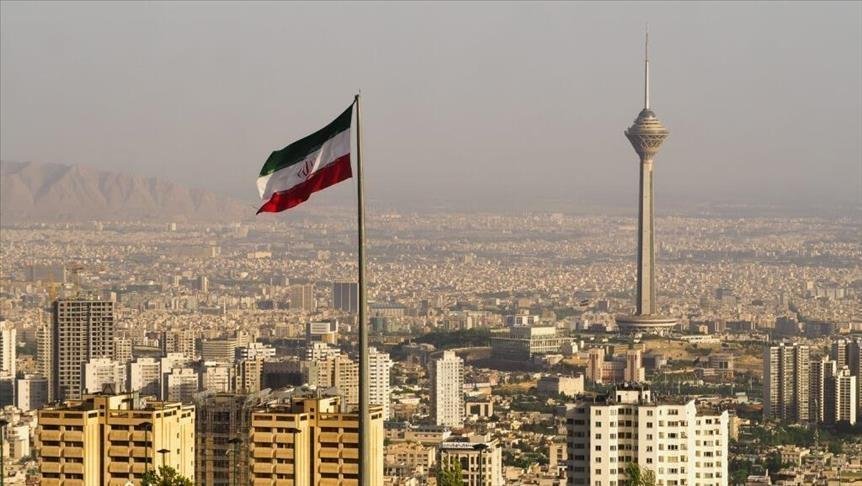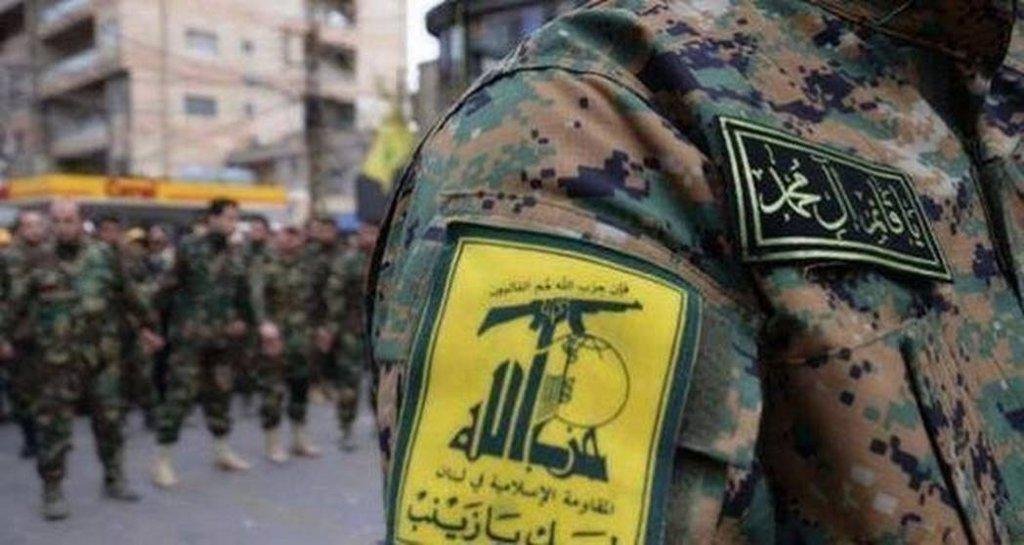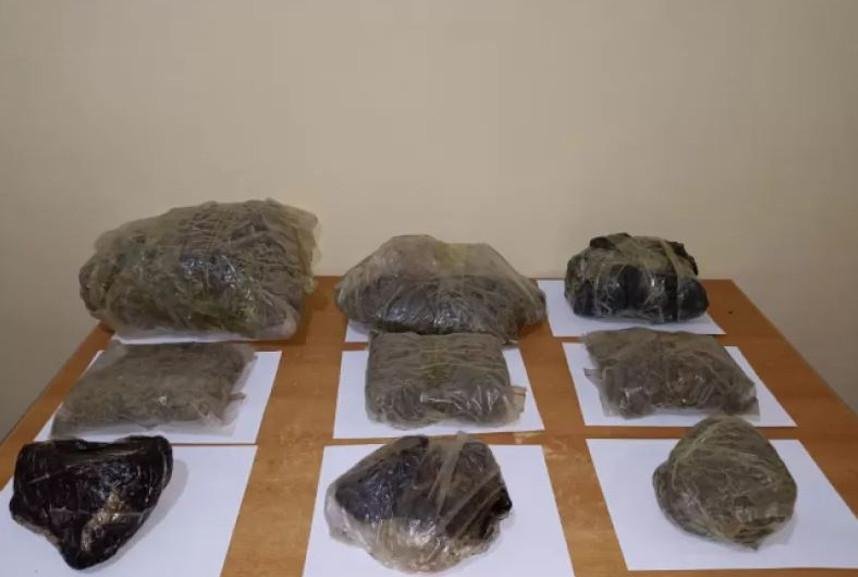IRGC: Iranian Drug Trafficking Guards Corps
In the era of Shah Mohammad Reza Pahlavi, the future revolutionary children of the ayatollahs in Iran were almost the poorest and at the same time with an exaggerated propensity for violence, practically marginalized thugs. It was from their ranks that the organisers and leaders of the cruel and merciless Islamic Revolutionary Guards Corps (IRGC) later emerged, becoming the main tool of the theocratic regime in the oppression of the Iranian population.
For more than four decades of its existence, the IRGC has built a powerful military-industrial-financial system. But the "guards" did not limit themselves only to legal business activities and increased the volume of Iran's shadow economy many times, creating a powerful mafia structure that established strict control over the "gray sector". So at present, the IRGC has accumulated untold wealth, it is possible that it exceeds the state treasury of the country.
The volume of the shadow economy and the IRGC's influence especially increased during the presidency of Mahmoud Ahmadinejad (2005-2013), in an era when international sanctions began to strike blow after blow at the Iranian economy, and circumvention of sanctions became the main method of import-export operations. Reports and court cases on corruption and informal transactions that took place during Ahmadinejad's rule point to the important role of the shadow economy at that time.
Back in the early 2000s, former Iranian Parliament Speaker Mehdi Karroubi complained that all seaports were tightly controlled by the IRGC and were being used to smuggle various goods. And Ahmadinejad, Karroubi's sworn political enemy, then openly called the IRGC "brothers smugglers".
Since then, the IRGC has significantly expanded its influence and today controls Iran’s sea, air and land borders. Almost all sea and air ports, strategic roads, and all this vast infrastructure are actively used by the "guards" to smuggle anything and everything. The IRGC does not despise drugs, and it is widely assumed that they are not its primary source of revenue.

There are no official data, but according to experts, the shadow economy accounts for 35-44 per cent of Iran's declared gross domestic product (GDP), which amounts to $160-200 billion. Informed sources claim that the IRGC controls at least a third of the entire Iranian economy (both formal and informal).
As already noted, drug trafficking is an important area of the shadow economy controlled by the IRGC. As a neighbour of Afghanistan, which produces more than 80 per cent of the world's opioid drugs, Iran is the main transit route for Afghan opium and its derivatives smuggled to the Middle East and Europe. Iran's border with Pakistan and Afghanistan, with a length of about 2,000 kilometres, is one of the busiest drug smuggling corridors in the world. And this is the most profitable business for the IRGC, and with a double application. On the one hand, the soldiers of the corps distribute drugs inside Iran, because it is easier to keep drugged people in an atmosphere of repression and fear. Drug addicts are more likely to succumb to all kinds of propaganda and at the same time are quite indifferent to what is happening. They will not be violently indignant or actively protest against accusing citizens, even their friends, of treason at the slightest provocation; those addicted to the devil's potion and numerous executions are apathetic. An equally important aspect of the IRGC's drug business is the ability to direct huge profits from it to sponsor Iranian proxy forces around the world.
Large-scale drug operations allow the "guards" to finance terrorism, provoke wars and unrest in their region and beyond. The IRGC carries out a significant part of the drug trade through trusted people who occupy a solid position, for example, in the Lebanese Hezbollah or closely associated with the IRGC Asaib Ahl al-Haq, Kataib Hezbollah, Badr, Al-Hashd al-Shaabi, as well as in a special unit of Islamic guards Al-Quds. Although often the corps was directly involved in drug trafficking, as, for example, in the case of his own General Golamreza Bagbani. The US Treasury Department in 2012 ranked not the last functionary of the IRGC, which was then a general, among particularly large drug traffickers for his involvement in the transportation of Afghan opiates through Iran to the West. Coordinating the supply of drugs in the area of operations of his unit in the provinces of Sistan and Baluchistan, Bagbani ensured the safe transportation of opium along the borders of Afghanistan and Pakistan, for which Afghan drug traffickers delivered weapons to the Taliban on his behalf.
However, the US special services have repeatedly managed to catch other IRGC commanders in drug trafficking. One of them was the Iranian military commander, Brigadier General, commander of the IRGC units in Tehran, Abdullah Araki. He was suspected of conspiring with members of the Eastern European underworld to create a drug smuggling network.
It is worth noting that the important aspect of drug smuggling for the "guards" is that this criminal activity allows them to acquire wide connections in international criminal organisations, and not only. Useful, more precisely, mutually beneficial acquaintance in the criminal, as well as in the political world, helps to support and expand the IRGC capabilities.
That is, it is clear that the corps' forces are not funded at all from the Iranian state budget, but primarily from illegal operations on the international market. And it is even quite likely that certain percentages of the shadow trade turnover are deducted to the state budget. Meanwhile, being in collusion with the Taliban, IRGC officers were able to conclude the most profitable deals with Afghan and Pakistani heroin producers, as well as with Eastern European smuggling groups that delivered drugs to Europe via the "Balkan route".

By the way, Hezbollah has already firmly established itself in Mexico and South America, where the group manages a well-established drug empire in the criminal market. Through Hezbollah, Albanian immigrants who settled in Western Europe became the main conductors of an extensive drug network, managing to establish ties with the most powerful drug lords in Latin America, and the barter of heroin for cocaine turned them into the main suppliers of cocaine to Europe, and through them allowed Al-Quds and Hezbollah to make a huge fortune.
At the same time, Iran is one of the largest producers of methamphetamine in the world. Most of this narcotic drug is exported from there to other countries in the Middle East, as well as Europe and Southeast Asia. Moreover, the Iranian methamphetamine market is expanding every day, as new production laboratories are opening all over the country. And the IRGC is suspected of actively participating in the production of methamphetamine, because none of the known criminal groups in Iran has the sophisticated equipment and relevant knowledge necessary for this.
The Iranian regime is experiencing a growing need for large-scale financial resources for its militant and terrorist activities in the region, especially after US sanctions. And therefore, at first glance, the authorities show indifference to the drug activities of the IRGC, which in fact is behind the scenes patronage. Thanks to this, mafia drug trafficking is increasing at the state level, and the IRGC manages the entire process. The "guards" use most of their political, diplomatic and logistical capabilities for these purposes, thus seeking to mitigate the consequences of sanctions.
According to the United Nations Office on Drugs and Crime (UNODC), about 40 per cent of drugs trafficked through Iran remain in the country, and 60 per cent are transferred to neighboring states, and eventually to Europe.
Another proof of the Iranian regime's patronage of the IRGC's illegal trade operations is that the corps freely uses the country's infrastructure and military facilities to solve its strategic tasks.
And at this, that is, at the trade and financial level, the participation of the leadership of the "guards" in the life of the country does not end. With this, we can say, it is just beginning. The Corps has a special influence on the foreign and security policy of the whole of Iran. They have created their own networks for intelligence gathering through a special Information Backup Unit that exists in parallel with the Ministry of Intelligence and has significant influence. Like the ministry, this and other IRGC intelligence units operate both inside and outside the country. The IRGC is also officially responsible for the Shahab medium-range ballistic missile program and controls the state program for the creation of nuclear weapons.
However, one of the main strategic goals of the IRGC is the export of the Islamic Revolution. This is the responsibility of Al-Quds, an elite unit that uses terrorist and sabotage methods to fight "the enemies of Iran". Al-Quds provides operational support to revolutionary and anti-American groups and infiltrates the Shiite and other Muslim populations to create civil and political support for the implementation of Tehran's plans. In fact, these proxy groups are used to disguise the cross-border terrorist activities of Iran. The "guards" also attract retired officers to their multilateral activities, who, by the way, are involved in the legislature in many ways and occupy a significant number of seats in the Iranian parliament. That is, through them it is possible to influence the adoption of the necessary laws or amendments to them.

The financial base of the IRGC, on which all its other goals and objectives are realized, is based precisely on drugs. It is noteworthy that the Iranian government officially prohibits their use and distribution in the country, but at the same time is not averse to receiving financial and operational benefits from participation in the international drug trade. This has already led to extremely negative consequences - a rapid increase in heroin addiction among the Iranian population.
According to the UN, over the past 30 years, a quarter of heroin and morphine confiscated worldwide and three quarters of opium were intercepted in Iran. Now about 30 per cent of Afghan drugs enter Europe through this country. In the Islamic Republic itself, almost three million people take drugs regularly and one and a half million from time to time. Part of the routes that go from Iran to Europe pass through the Caucasus Mountains. One of them is: Iran - Azerbaijan - Georgia - Black Sea - Ukraine and/or Bulgaria. No less active is the other: Iran - Caspian Sea - Russian Federation / Caucasus - Black Sea - Ukraine and/or Bulgaria.
After the 44-day war, Baku put a tight barrier to drug trafficking from Iran to Europe. In fact, Azerbaijan has now found itself at the forefront of the fight against international drug trafficking and has assumed responsibility for suppressing narcotic potions to European countries and to Russia. After, as a result of the victory in the Second Karabakh War, Azerbaijan regained control over the 130-km-long section of the border with Iran, which had been under Armenian control for almost 30 years, it put a barrier to drug trafficking from Iran through the Jabrayil district of Azerbaijan to Armenia and further to Europe. That is, for three decades, Tehran, in collusion with Yerevan, used the then occupied Azerbaijani territories for its drug trafficking to Europe. And the drug business in the areas captured by the Armenians was supervised by local "collective farm generals".
After September 2020, the contractual, which means absolutely uncontrolled drug transit from Iran to occupied Karabakh, and from there just as freely to Armenia and further to Europe, however, with all the tricks of the smuggling genre, stopped. What the Iranian drug traffickers, including those who have settled in the IRGC, do not want to put up with in any way. Therefore, after the border came under the control of Azerbaijani border guards, almost weekly shootouts with drug couriers breaking out of Iran began. Another drug route was stopped by Azerbaijan after Baku established control on the Gorus-Gafan road. In general, in the period from November 2020 to October 2021, Azerbaijani customs officers alone revealed 46 facts of smuggling of drugs and psychotropic substances, 1,675 kg of drugs were seized. More than 99 per cent of drugs withdrawn from illegal trafficking were found during attempts to transport them across the border at customs posts in Astara, Bilasuvar and the Nakhchivan Autonomous Republic bordering Iran.
To date, the IRGC unequivocally controls drug trafficking throughout Iran, using the multibillion-dollar turnover from it to establish links with the global criminal network, preserve the Ayatollah regime in its country and undermine political stability in Western states. Despite the fact that hundreds of people guilty of drug trafficking and drug possession are executed in Iran every year, this tough position hides the lucrative business of the IRGC and their patrons in the supreme power.








